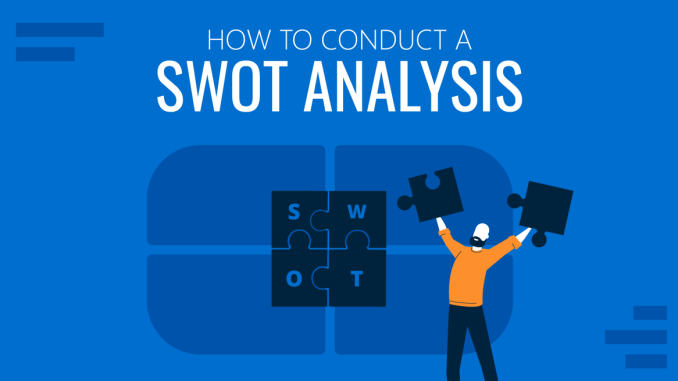
Conducting a SWOT analysis is a fundamental skill for any business leader or entrepreneur aiming to understand their company’s position in the market and plan for future growth. The term SWOT stands for Strengths, Weaknesses, Opportunities, and Threats, representing four critical aspects that shape the internal and external environment of a business. While the concept may sound straightforward, performing a meaningful SWOT analysis requires thoughtful reflection, honest assessment, and strategic thinking. When done correctly, it can illuminate the path forward, helping businesses leverage their advantages, address vulnerabilities, seize new possibilities, and mitigate risks.
The first step in conducting a SWOT analysis is to clearly define the objective. Are you evaluating a new product, a potential market entry, or the overall health of your organization? Establishing the focus provides direction and ensures that the analysis remains relevant and actionable. For example, a small tech startup considering an expansion might conduct a SWOT analysis to determine whether it’s ready to enter a competitive international market. In contrast, a well-established retail chain may use it periodically to reassess its position amid shifting consumer trends. The clarity of purpose influences how you gather and interpret data, setting the stage for insightful conclusions.
Examining strengths involves identifying what your business does well and the unique resources it possesses. These can include tangible assets such as skilled employees, proprietary technology, or strong financial reserves, as well as intangible qualities like brand reputation, loyal customer base, or an innovative company culture. It’s important to be both comprehensive and realistic during this phase, avoiding the temptation to overstate capabilities. For instance, a boutique marketing agency might recognize that its close client relationships and creative flexibility are key strengths that larger competitors struggle to replicate. Highlighting such attributes helps reinforce what should be maintained and amplified in strategic plans.
On the other hand, acknowledging weaknesses is equally crucial, though it can be uncomfortable. Weaknesses are internal factors that limit performance or expose the business to challenges. These might include outdated technology, limited market reach, high employee turnover, or inefficiencies in operations. Identifying these areas is not about assigning blame but rather about fostering a culture of continuous improvement. Taking the example of a family-owned restaurant, perhaps its weakness lies in a lack of digital marketing expertise, causing it to miss out on younger customers. Recognizing this gap offers a clear target for development, whether through training, hiring, or partnering with external experts.
Moving beyond internal factors, the next part of a SWOT analysis focuses on opportunities, which are external conditions that the business can exploit to its advantage. Opportunities may arise from emerging market trends, technological advances, changes in regulations, or shifting consumer behaviors. Spotting these requires keeping a finger on the pulse of the industry and the broader environment. For example, a renewable energy company might identify growing government incentives and increasing public concern about climate change as opportunities to expand their product offerings and enter new markets. Capitalizing on opportunities often involves timely decision-making and resource allocation, reinforcing the need for vigilance and agility.
Finally, understanding threats completes the picture by highlighting external forces that could hinder success or damage the business. These can include new competitors, economic downturns, changing regulations, or disruptive innovations. Threats require careful monitoring and contingency planning. To illustrate, a traditional print media business might see the rise of digital content platforms as a significant threat to its readership and advertising revenue. By anticipating such risks, companies can devise strategies to adapt, such as diversifying revenue streams or investing in digital transformation. Ignoring threats can leave businesses vulnerable, underscoring the value of a balanced SWOT analysis.
Once the four quadrants of the SWOT matrix are populated, the next step is to analyze the relationships between them. This often reveals insights that are not apparent when considering each element in isolation. For instance, a company might discover that its strength in customer service could help it overcome the threat of new market entrants. Alternatively, a weakness in production capacity might limit the ability to seize a promising growth opportunity. Connecting these dots enables leaders to develop strategies that build on strengths, shore up weaknesses, pursue opportunities, and guard against threats. This integrative approach transforms a static list into a dynamic strategic tool.
The effectiveness of a SWOT analysis depends on the quality of information gathered and the honesty of the evaluation. It often helps to involve diverse perspectives from within the organization, including employees from different departments, managers, and even trusted external advisors. Such collaboration ensures that blind spots are minimized and that the analysis reflects the multifaceted reality of the business environment. Additionally, supporting qualitative assessments with quantitative data—such as sales figures, customer feedback, or market research—adds rigor and credibility to the findings.
In practice, businesses frequently revisit their SWOT analysis as part of ongoing strategic planning. Markets evolve, competitors change tactics, and internal dynamics shift, making it essential to update the analysis periodically. This iterative process encourages responsiveness and helps maintain strategic alignment. For example, a startup might conduct a SWOT analysis quarterly to ensure it remains adaptable as it scales, while a larger corporation may do so annually or when launching major initiatives.
In conclusion, conducting a SWOT analysis is more than just filling out a grid; it’s a powerful exercise in strategic thinking that demands careful consideration and honest reflection. By thoughtfully assessing strengths, weaknesses, opportunities, and threats, businesses gain clarity about their current position and the challenges and possibilities that lie ahead. This clarity empowers decision-makers to craft strategies that are not only ambitious but also grounded in reality. Whether you’re launching a new venture or steering an established company through change, mastering the art of SWOT analysis can be a critical step toward sustainable success.